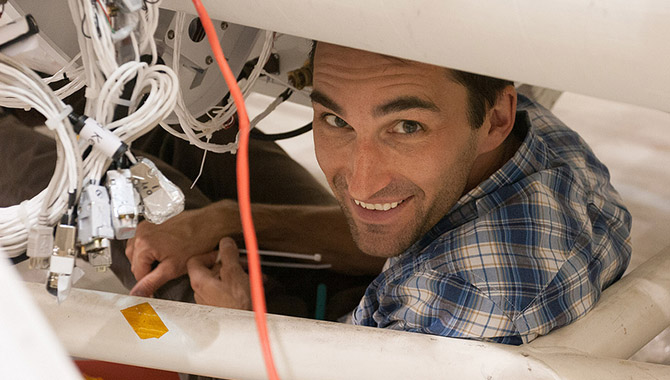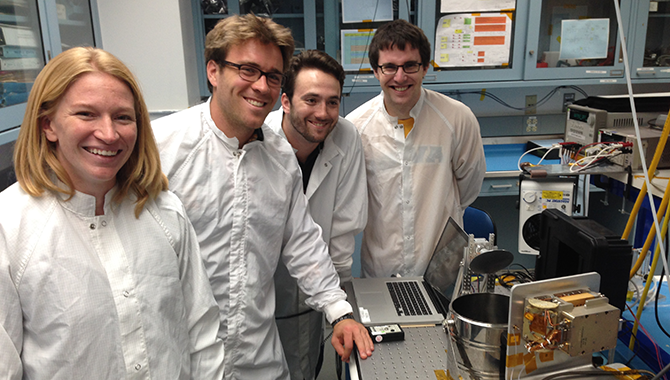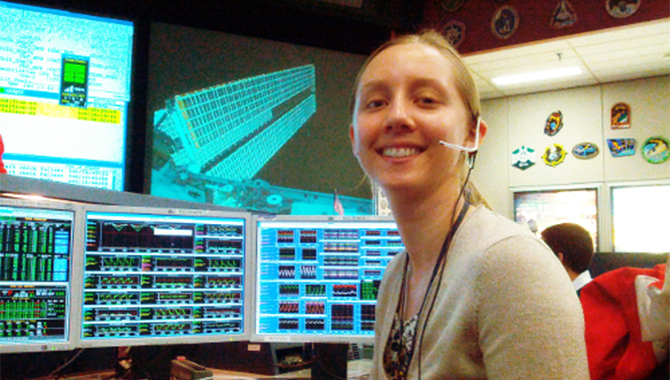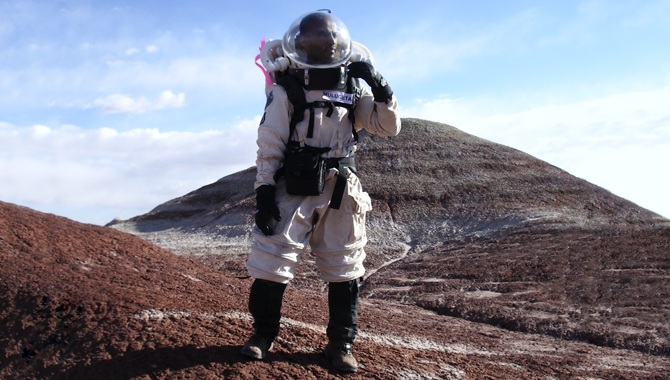
A September balloon launch by a young team of NASA engineers paves the way for higher resolution heliophysics and astrophysics observations.
Just before the sun rose on September 21, 2013, a small team of young engineers saw the culmination of a yearlong learning experience take flight. Arriving at the Columbia Scientific Balloon Facility (CSBF) in Fort Sumner, NM, at 2:00 a.m., the High Energy Replicated Optics to Explore the Sun (HEROES) team rolled out to the launch site to test the winds, waiting for a wind speed “sweet spot” between darkness and sunrise when the conditions are just right for launching a balloon payload. It was a perfect scenario: everything went according to plan and the payload launched completely in the dark, aided only by a few surrounding lights.
The HEROES mission, a balloon-borne hard (i.e., higher energy) X-ray telescope designed to make solar and astrophysical observations, is the fourth project in the Project HOPE (Hands-On Project Experience) program funded by NASA’s Science Mission Directorate and the Academy of Program/Project & Engineering Leadership. The mission is unique in that it united two disciplines that typically do not fly together: heliophysics and astrophysics.
The centerpiece of the mission is the High Energy Replicated Optics telescope originally developed at Marshall Space Flight Center. The HEROES telescope was modified to observe solar flares with 100 times better sensitivity and 50 times more dynamic range than the instruments before it, and also to provide new views of hard X-ray astrophysical targets.
Originally designed to look at distant stars, the telescope uses a sensitive star camera to know where it is looking. However, this camera was much too sensitive to observe nearby objects as bright as our sun. “The original payload had no capability of pointing at the sun,” explained Steven Christe, the HEROES co-principal investigator from Goddard Space Flight Center.
To address this challenge, Goddard engineers developed a targeting technology called the Solar Aspect System (SAS), which flew in conjunction with the Star Camera Aspect System, allowing the team to point at and track solar and astrophysical targets during the same flight. “Both the star camera and the SAS give you real-time knowledge of where you have your telescope pointed while you’re flying,” explained Christe.
“[Our] ultimate goal was to prove that these optics are the highest resolution hard X-ray optics that are in use anywhere,” said Jessica Gaskin, HEROES project team lead and co-principal investigator, adding that nearly any satellite mission could benefit from their work. “That’s really what we’re going for: ever-improved resolution for both solar and astrophysical observations.”
During the 24-hour flight, the team anxiously monitored their detectors and systems to ensure that the mission went according to plan. The HEROES team exceeded their baseline expectations, successfully completing a seven-hour observation of the sun, a three-hour observation of the Crab Nebula, and over six hours of observations of other astrophysical targets such as a stellar-mass black hole system called GRS1915+105. While the team was unable to monitor their data collection in real time due to telemetry limitations, “there is no indication that we weren’t able to get the data we intended,” said Gaskin. The payload worked extremely well with no major technical difficulties as was considered a technical success.
The HEROES mission met the learning objectives of the Project HOPE program: training NASA civil servants under NASA Procedural Requirements 7120.5 for project management and 7123.1 for systems engineering, and performing new and exciting science.
Over the next few months, the HEROES team will analyze the data from the flight and document their lessons learned.
Learn more about Project HOPE.
The HEROES balloon has just been released. This happens just prior to the gondola release.
Photo Credit: NASA Marshall Space Flight Center/Emmet Given









